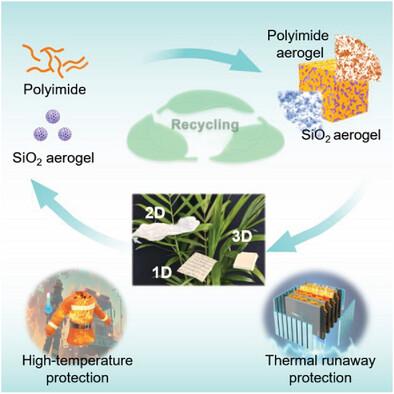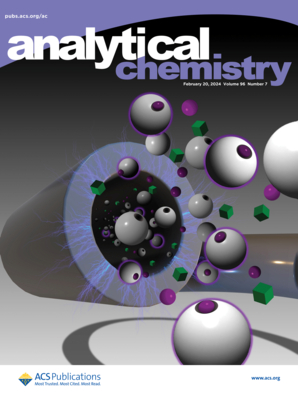多尺度制造可回收聚酰亚胺复合气凝胶
IF 6.7
1区 化学
Q1 CHEMISTRY, ANALYTICAL
引用次数: 0
摘要
随着能源供应转向更可持续的来源,减少体现排放变得越来越重要。生物基材料有可能成为合成聚合物的更具可持续性的替代品,但其性能往往还无法与合成材料相媲美。鉴于对高性能、高环境影响材料的持续依赖,确保其完全可回收性至关重要。气凝胶被国际理论化学和应用化学联合会(IUPAC)评为十大新兴技术之一,在隔热和热保护应用领域的市场增长迅速。在某些应用中,合成气凝胶和复合气凝胶表现出卓越的性能,尤其是在高温条件下。在这里,我们利用分子模拟工具阐明了聚合物与溶剂之间的相互作用力,开发了聚酰亚胺气凝胶的回收策略,并展示了它们在消防员纺织品热保护和锂离子电池组热失控保护中的应用。这些复合材料可拆卸设计,经过多次回收循环后,可完全回收起始材料,且组件不会出现任何降解。可回收复合材料可通过各种制造技术制成纤维(1D)、薄膜(2D)和复杂结构(3D)。气凝胶将出色的性能和卓越的可回收性独特地结合在一起,有助于在防护服、电动汽车、消费品和航空领域实现可持续利用。本文章由计算机程序翻译,如有差异,请以英文原文为准。

Multiscale Manufacturing of Recyclable Polyimide Composite Aerogels
Mitigating embodied emissions is becoming increasingly crucial as the energy supply shifts toward more sustainable sources. Bio-based materials present a potentially more sustainable alternative to synthetic polymers; however, it often do not yet match the performance of synthetic materials. Given the ongoing reliance on high-performance, high-environmental-impact materials, it is essential to ensure their complete recyclability. Aerogels, recognized by IUPAC as one of the top ten emerging technologies, are witnessing rapid market growth in thermal insulation and thermal protection applications. In certain applications, synthetic and composite aerogels exhibit superior performance, particularly under high temperatures. Here, molecular simulation tools are employed to elucidate the interaction forces between polymers and solvents, develop a recycling strategy for polyimide-based aerogels, and demonstrate their application in thermal protection for firefighter textiles and thermal runaway protection for Li-ion battery packs. These composites are engineered for disassembly, allowing for the complete recovery of starting materials without any degradation of components after multiple recycling cycles. The recyclable composites can be fabricated using various manufacturing techniques to produce fibers (1D), membranes (2D), and complex structures (3D). This unique combination of outstanding performance and excellent recyclability facilitates the sustainable utilization of aerogels in protective clothing, electric mobility, consumer goods, and aeronautics.
求助全文
通过发布文献求助,成功后即可免费获取论文全文。
去求助
来源期刊

Analytical Chemistry
化学-分析化学
CiteScore
12.10
自引率
12.20%
发文量
1949
审稿时长
1.4 months
期刊介绍:
Analytical Chemistry, a peer-reviewed research journal, focuses on disseminating new and original knowledge across all branches of analytical chemistry. Fundamental articles may explore general principles of chemical measurement science and need not directly address existing or potential analytical methodology. They can be entirely theoretical or report experimental results. Contributions may cover various phases of analytical operations, including sampling, bioanalysis, electrochemistry, mass spectrometry, microscale and nanoscale systems, environmental analysis, separations, spectroscopy, chemical reactions and selectivity, instrumentation, imaging, surface analysis, and data processing. Papers discussing known analytical methods should present a significant, original application of the method, a notable improvement, or results on an important analyte.
 求助内容:
求助内容: 应助结果提醒方式:
应助结果提醒方式:


